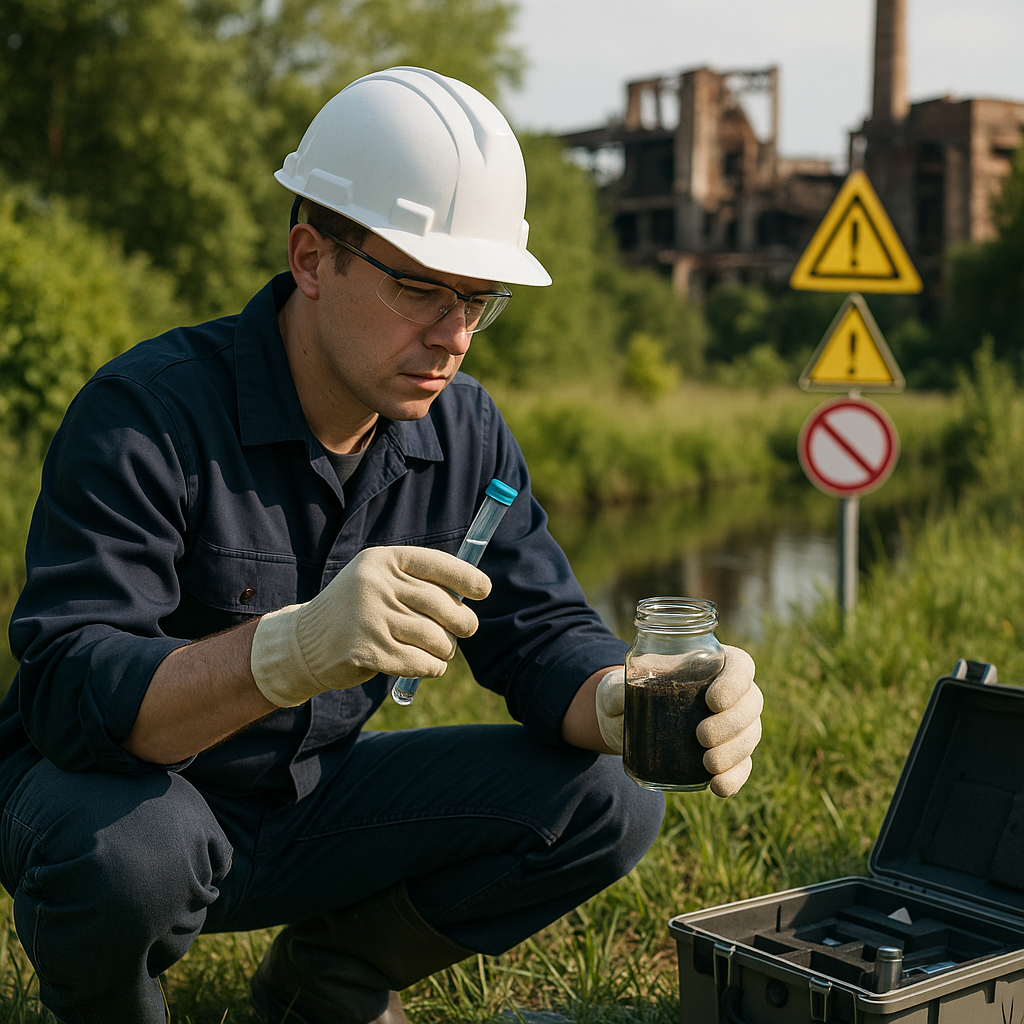5901 Botham Jean Blvd, Dallas, TX 75215
A Guide to Decommissioning Heavy Manufacturing Equipment
July 25, 2025Decommissioning heavy manufacturing equipment is the process of safely shutting down and removing old or obsolete industrial machinery from operational use. It serves as a critical transition point when equipment reaches the end of its functional life, allowing companies to prevent workplace accidents, protect surrounding environments, and recover valuable resources.
The process involves more than simply powering down machines. It requires careful planning, specialized expertise, and strict adherence to safety protocols. When manufacturing equipment becomes outdated, experiences frequent breakdowns, or no longer meets production requirements, a structured decommissioning approach ensures the orderly removal of these industrial assets.
For plant managers and industrial facility owners, proper decommissioning represents both a responsibility and an opportunity. The structured shutdown prevents potential safety hazards from deteriorating equipment while freeing up valuable floor space for new machinery or operational needs. It also allows for the recovery of reusable components, recyclable materials, and valuable metals that might otherwise go to waste. This final stage in the equipment lifecycle requires the same careful attention as installation, serving as the foundation for facility upgrades, relocations, or repurposing projects.
What Are the Key Steps in the Decommissioning Process?

The decommissioning process requires thorough planning and systematic execution to ensure safety, compliance, and environmental protection. Understanding each phase helps organizations manage these complex projects more effectively while minimizing risks. Let’s examine the five essential steps in detail.
Initial Assessment
The first critical step in any decommissioning project is conducting a comprehensive initial assessment. This evaluation creates the foundation for all subsequent activities and identifies potential challenges before work begins.
During this phase, professionals evaluate the equipment history, usage patterns, and structural integrity. They identify any hazardous materials or contaminants present in the facility. The assessment also examines how equipment removal might impact neighboring systems or infrastructure.
A thorough initial assessment helps project managers develop accurate timelines, budgets, and resource allocations. It also provides valuable insights for the safety planning phase that follows.
Safety Plan Development
Safety remains the paramount concern throughout the decommissioning process. Based on the initial assessment findings, a detailed Site Health and Safety Plan (HASP) must be created before any physical work begins.
An effective safety plan includes protocols for disconnecting all power sources, implementing lockout/tagout procedures, and using appropriate personal protective equipment. It identifies specific hazards associated with each piece of equipment and outlines mitigation strategies.
The plan must comply with OSHA regulations, EPA requirements, and any industry-specific guidelines. Regular safety briefings and training sessions ensure all personnel understand their responsibilities and the proper procedures to follow.
Site Preparation and Permits
Once the safety plan is established, the focus shifts to preparing the site for decommissioning activities. This phase involves several critical components to ensure the work proceeds smoothly and legally.
Key elements include obtaining all necessary work authorization permits, securing the area to prevent unauthorized access, and verifying complete site isolation. Teams must implement lockout/tagout programs for all energy sources, disconnect utilities, and conduct preliminary environmental testing.
For facilities with hazardous materials, this stage may also involve flushing and cleaning tanks or piping systems. Proper site preparation creates a safer working environment and helps prevent accidents or regulatory violations during the removal phase.
Equipment Removal
The equipment removal phase represents the most visible aspect of decommissioning. This stage requires careful coordination and specialized techniques based on the specific equipment being decommissioned.
For heavy or large equipment, safe dismantling procedures must be followed before transport. Construction equipment like cranes and rigging materials help lift and secure items safely. Underground storage tanks may require excavation, while sensitive electronic equipment needs special handling to prevent damage.
Throughout the removal process, teams must maintain detailed documentation of all components, including photographs and notes. This documentation proves invaluable for regulatory compliance and may also assist with reassembly if equipment will be relocated rather than disposed of.
Site Restoration
The final step in the decommissioning process involves restoring the site to its original condition or preparing it for its next use. This phase is crucial for environmental compliance and reducing long-term liability.
After equipment removal, soil and groundwater testing determine if contamination occurred during the facility’s operation. If testing reveals contamination, remediation efforts follow established environmental protocols to treat or remove affected materials.
The restoration phase must be thoroughly documented with permits, testing samples, and disposal records. These records may be required by regulatory agencies and provide important protection against future liability claims.
Proper site restoration not only fulfills regulatory requirements but also demonstrates environmental responsibility and commitment to sustainability principles.
What Are the Safety and Environmental Considerations?

Decommissioning heavy equipment demands rigorous safety and environmental protocols to protect workers, communities, and ecosystems. The process involves multiple hazards that require careful management through comprehensive risk assessments and detailed planning.
When heavy machinery reaches the end of its operational life, proper decommissioning becomes critical. Equipment often contains stored energy in electrical, hydraulic, or pneumatic systems that can release unexpectedly if not properly neutralized. A single oversight during this process can lead to serious injuries or fatalities.
Managing Hazardous Materials
Heavy equipment typically contains numerous hazardous materials that pose significant risks during decommissioning. These include:
- Oils, fuels, and hydraulic fluids that can contaminate soil and groundwater
- Coolants containing toxic chemicals
- Mercury in switches and instrumentation
- PCBs in older electrical equipment
- Asbestos in insulation materials
- Heavy metals in batteries and electronic components
Each substance requires specific handling procedures and containment measures. For instance, specialized containers must be used for collecting and transporting these materials to prevent spills or leaks. Environmental testing is often necessary before, during, and after the decommissioning process to identify any contamination.
Regulatory Compliance Requirements
OSHA and EPA regulations form the backbone of safety and environmental compliance during equipment decommissioning. These agencies enforce strict standards that companies must follow to ensure worker safety and environmental protection.
Key regulatory requirements include:
- Implementation of lockout/tagout (LOTO) procedures to prevent accidental energy release
- Proper use of personal protective equipment (PPE) based on specific hazards
- Development of spill prevention and response plans
- Appropriate waste classification and disposal documentation
- Air quality monitoring when dismantling equipment with potential airborne hazards
Beyond federal regulations, state and local requirements may impose additional standards. Industry-specific guidelines also play an important role in establishing best practices for different types of equipment.
Risk Assessment and Planning
A thorough risk assessment is the foundation of safe decommissioning. This process identifies potential hazards, evaluates their severity and likelihood, and establishes control measures to mitigate risks.
Effective risk assessments should address:
- Structural stability of equipment during dismantling
- Potential for chemical exposure
- Fall hazards and confined space entry requirements
- Emergency response procedures
- Environmental impact considerations
The assessment findings should inform a comprehensive decommissioning plan that sequences activities to minimize risks. This plan must be communicated to all personnel involved in the process.
Environmental Impact Mitigation
The environmental impact of decommissioning extends beyond immediate safety concerns. Without proper controls, contaminants can leach into soil and groundwater, affecting ecosystems for years to come.
Effective environmental protection measures include:
- Conducting baseline environmental testing before decommissioning begins
- Installing containment systems to prevent spills from reaching soil or water
- Implementing dust control measures during dismantling
- Properly segregating waste materials for appropriate disposal or recycling
- Monitoring air, soil, and water quality throughout the process
Site remediation may be necessary after equipment removal to restore the area to its original condition or prepare it for future use. This often involves soil testing and potential remediation if contamination is discovered.
Training and Competency Requirements
Personnel involved in decommissioning must have appropriate training and certifications. This includes specialized training for handling specific hazardous materials, operating necessary equipment, and implementing safety procedures.
Key training elements should cover:
- Hazard recognition and risk assessment
- Proper use of personal protective equipment
- Spill response procedures
- First aid and emergency response
- Environmental protection measures
Regular safety briefings throughout the decommissioning process help reinforce training and address any new hazards that may arise as work progresses. Documentation of all training and certifications is essential for regulatory compliance and liability protection.
By addressing these safety and environmental considerations systematically, organizations can ensure that heavy equipment decommissioning proceeds safely while minimizing environmental impact. This approach not only protects workers and communities but also helps companies avoid costly regulatory penalties and environmental remediation.
Conclusion: Responsible Decommissioning Drives Operational and Environmental Gains

Decommissioning heavy manufacturing equipment is far more than a logistical task—it’s a vital part of responsible facility management. When executed with planning, precision, and environmental care, the process minimizes safety risks, maximizes material recovery, and sets the stage for future operational improvements. From safeguarding workers to preserving natural resources, each phase of decommissioning carries lasting implications for plant performance and corporate sustainability.
Partnering with experienced professionals ensures regulatory compliance, efficient execution, and meaningful returns on your decommissioning investment. Call Okon Recycling at 214-717-4083 for all your metal recycling needs.
